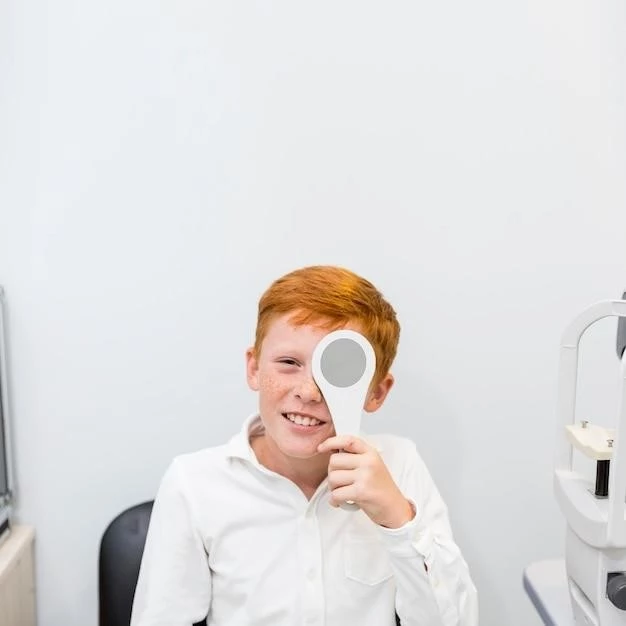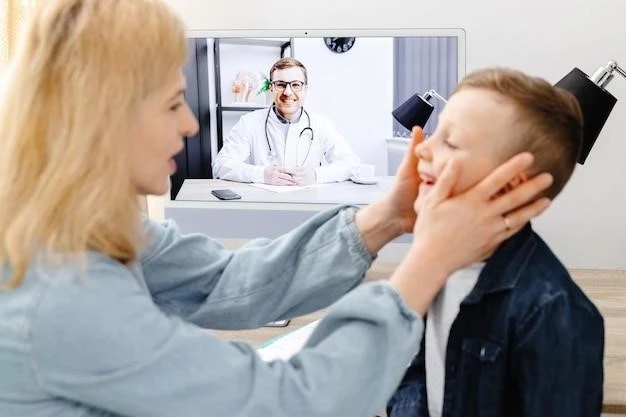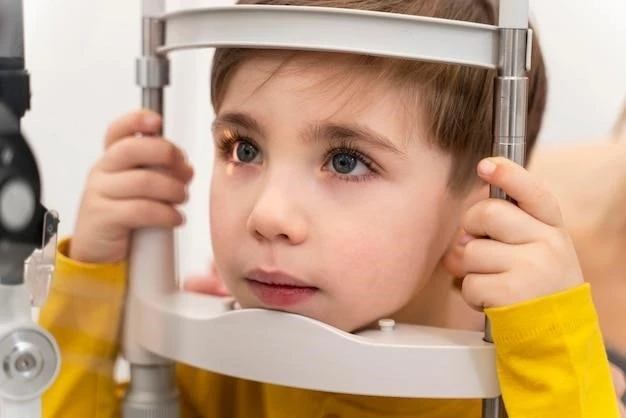Introduction
Oculodentodigital syndrome (ODDD) is a rare genetic disorder caused by mutations in the GJA1 gene, leading to various clinical manifestations.
Overview of Oculodentodigital Syndrome
Oculodentodigital syndrome (ODDD) is a rare genetic disorder primarily characterized by mutations in the GJA1 gene. It affects various parts of the body, leading to distinctive facial features, ocular anomalies, dental abnormalities, and digital deformities. This multisystemic disorder follows autosomal dominant inheritance and results in disrupted cell-to-cell communication due to the dysfunction of connexin 43 protein. Clinical manifestations include small eyes, tooth abnormalities, and limb anomalies. Early diagnosis through clinical examination and genetic testing is crucial for proper management and treatment of ODDD.
Genetic Basis
Oculodentodigital syndrome (ODDD) results from mutations in the GJA1 gene located on chromosome 6q22-q24, disrupting the production of connexin 43 protein and leading to impaired cell-to-cell communication.
Mutation in GJA1 Gene
Oculodentodigital syndrome is primarily caused by mutations in the GJA1 gene, which encodes connexin 43 protein crucial for cell-to-cell communication. These mutations lead to disrupted intercellular signaling, contributing to the characteristic features of the syndrome involving eyes, teeth, and fingers.
Oculodentodigital syndrome presents characteristic facial features including a narrow nose, hypoplastic alae nasi, thin nostrils, and prominent epicanthic folds contributing to a unique facial appearance.
Characteristic Facial Features
Oculodentodigital syndrome is distinguished by specific facial characteristics, including a narrow nose with hypoplastic alae nasi, prominent columella, thin nostrils, a narrow nasal bridge, and pronounced epicanthic folds, contributing to a unique facial appearance. These features are essential in the clinical diagnosis of the syndrome.
Involvement of Eyes, Dentition, and Fingers
Oculodentodigital syndrome displays a spectrum of clinical symptoms affecting the eyes, dentition, and fingers. Common manifestations include microphthalmia, congenital cataract, syndactyly, dental abnormalities like undersized or missing teeth, and distinctive finger deformities like complete syndactyly, contributing to the complex profile of the syndrome.
Diagnosis
Oculodentodigital syndrome diagnosis involves a thorough clinical examination and confirmation through genetic testing, essential for accurate identification and management of the condition.
Clinical Examination
Diagnosis of Oculodentodigital syndrome is primarily reliant on a thorough clinical examination involving the assessment of characteristic facial features, eye anomalies such as microphthalmia, dental abnormalities like missing or undersized teeth, and digital deformities including syndactyly. A comprehensive evaluation by healthcare professionals is vital in identifying the constellation of clinical manifestations associated with the syndrome.
Genetic Testing
Genetic testing plays a crucial role in confirming the diagnosis of Oculodentodigital syndrome by identifying mutations in the GJA1 gene. This testing helps to establish a definitive genetic basis for the condition٫ guiding appropriate management and treatment strategies for affected individuals.
Disease Overview
Oculodentodigital syndrome (ODDS) is a rare genetic disorder involving the eyes, teeth, and fingers, characterized by various clinical symptoms.
Effects on Eyes, Teeth, and Fingers
Oculodentodigital syndrome affects various aspects of health, particularly impacting the eyes, dentition, and fingers. The syndrome manifests with characteristics such as microphthalmia, congenital cataract, dental abnormalities like missing or undersized teeth, and digital deformities including syndactyly, highlighting the diverse consequences of the condition on these specific bodily regions.

Syndromes and Differential Diagnoses
When considering oculodentodigital syndrome, it is crucial to distinguish it from other syndromes such as Hallermann-Streiff syndrome, EEC syndrome, orofacial digital syndrome Type II, and keratitis ichthyosis deafness syndrome through careful evaluation of clinical features.
Distinction from Similar Syndromes
When assessing Oculodentodigital syndrome, it is crucial to differentiate it from related syndromes like Hallermann-Streiff syndrome, EEC syndrome, orofacial digital syndrome Type II, and keratitis ichthyosis deafness syndrome by carefully evaluating the distinctive clinical features associated with each condition.
Prevalence and Genetic Inheritance
Oculodentodigital syndrome is a rare genetic disorder with a prevalence of less than 1 in 1,000,000, primarily following an autosomal dominant inheritance pattern. Both genders are equally affected by this condition.
Autosomal Dominant Inheritance Pattern
Oculodentodigital syndrome follows an autosomal dominant inheritance pattern, where affected individuals have a 50% chance of passing on the mutated gene to their offspring. This genetic pattern plays a fundamental role in the transmission and manifestation of the syndrome across generations.
Occurrence Rate and Gender Distribution
Oculodentodigital syndrome is a rare condition with an occurrence rate of approximately 1 in 10 million individuals. Notably, both males and females are affected by this genetic disorder in equal numbers, highlighting the unbiased gender distribution of the syndrome.
History and Discoveries
Oculodentodigital syndrome, first recognized by Lohman in 1920, has since been characterized by distinctive facial features and genetic discoveries, including mutations in the GJA1 gene.
Initial Recognition by Lohman
Oculodentodigital syndrome was first described by Lohman in 1920. Subsequent findings by Gillespie in 1964 and Meyer-Schwickerath in 1957 further characterized the distinctive clinical features associated with the syndrome, paving the way for ongoing research and understanding of this rare genetic disorder.
Milestones in ODDD Research
Research on Oculodentodigital Syndrome (ODDD) has progressed significantly since its initial recognition by Lohman in 1920. Succeeding milestones by Gillespie٫ Meyer-Schwickerath٫ and others have contributed to a deeper understanding of the genetic and clinical aspects of the syndrome. Advances in identifying GJA1 gene mutations and elucidating the cellular mechanism underlying ODDD have been pivotal in shaping research directions and therapeutic interventions for individuals affected by this rare genetic disorder.

Neurological and Craniofacial Manifestations
Oculodentodigital syndrome presents with various neurological symptoms such as ataxia, hearing loss, and spasticity, along with distinct craniofacial characteristics like a narrow nose and dental abnormalities.
Neurological Symptoms
Neurological symptoms of Oculodentodigital Syndrome may include ataxia, hearing loss, spasticity, and dysarthria, while craniofacial characteristics commonly observed are a narrow nose, hypoplastic alae nasi, and mandibular overgrowth, contributing to the clinical profile of the syndrome.
Craniofacial Characteristics
Oculodentodigital syndrome commonly presents with distinctive craniofacial characteristics including a narrow nose, hypoplastic alae nasi, thin nostrils, and a prominent columella. Additional features may include a narrow nasal bridge and prominent epicanthic folds, contributing to the unique facial appearance associated with the syndrome.
Impact of GJA1 Gene Mutation
The mutation in the GJA1 gene in Oculodentodigital syndrome disrupts connexin 43 protein, impairing cell-to-cell communication and causing varied clinical manifestations;
Role of Connexin 43 Protein
The GJA1 gene mutation in Oculodentodigital Syndrome leads to the disruption of connexin 43 protein function٫ affecting cell-to-cell communication and contributing to the wide range of clinical manifestations observed in individuals with the syndrome.
Disruption of Cell-to-Cell Communication
The mutation in the GJA1 gene associated with Oculodentodigital syndrome leads to the disruption of connexin 43 protein functionality, hindering intercellular communication and contributing to the diverse clinical manifestations observed in affected individuals.
Case Studies and Treatment Approaches
Case studies often involve surgical interventions addressing symptoms and improving functional outcomes in individuals with Oculodentodigital syndrome. Additionally, intrathecal baclofen therapy has demonstrated effectiveness in enhancing functional capabilities.
Surgical Interventions and Self-Esteem Assessment
Surgical interventions play a crucial role in addressing physical symptoms in individuals with Oculodentodigital syndrome, improving functionality and aesthetic outcomes; Furthermore, conducting self-esteem assessments before and after surgical procedures can provide valuable insights into patients’ psychological well-being and satisfaction post-operation.
Intrathecal Baclofen Therapy and Functional Improvement
Intrathecal baclofen therapy has shown promising results in improving functional outcomes for individuals with Oculodentodigital syndrome. This therapeutic approach can effectively address symptoms such as spasticity and enhance the overall quality of life for affected individuals by providing targeted relief.
Management and Multidisciplinary Care
Individuals with Oculodentodigital syndrome require comprehensive management involving regular ocular, neurological, and oral examinations. Severe limb abnormalities may necessitate plastic or orthopedic surgical interventions for optimal care and functionality.
Regular Ocular, Neurological, and Oral Examinations
Regular ocular, neurological, and oral examinations are essential for individuals with Oculodentodigital syndrome to monitor and address potential issues affecting these areas. These routine assessments play a crucial role in the comprehensive management of the condition, allowing healthcare professionals to provide timely interventions and support based on the individual’s specific needs.
Plastic or Orthopedic Surgery for Severe Limb Abnormalities
Individuals with Oculodentodigital syndrome may benefit from plastic or orthopedic surgery to address severe limb abnormalities. These surgical interventions aim to improve functionality and correct deformities, enhancing the overall quality of life for affected individuals.
Research and Publications
PubMed/Medline articles on Oculodentodigital Syndrome provide valuable insights into the clinical symptoms, genetic mutations, and treatment approaches for this rare genetic disorder.
PubMed/Medline Articles on Oculodentodigital Syndrome
A PubMed/Medline search on Oculodentodigital Syndrome retrieved a total of 177 articles, providing comprehensive insights into the genetic mutations, clinical manifestations, and treatment modalities associated with this rare genetic disorder. These articles offer valuable information for healthcare professionals, researchers, and individuals affected by Oculodentodigital Syndrome.
Awareness Campaigns and Patient Perspectives
World Down Syndrome Day and advocacy efforts play a crucial role in increasing awareness about conditions like Oculodentodigital syndrome, empowering patients, and fostering community support for individuals affected by rare genetic disorders.
World Down Syndrome Day and Advocacy
Information on Oculodentodigital Syndrome, also known as Oculodentodigital Dysplasia (ODDD), is captured in various literature sources, highlighting genetic mutations, clinical manifestations, and available treatments. The condition is primarily autosomal dominant and involves unique facial features along with eye, dental, and finger abnormalities. Specific gene mutations disrupt connexin 43 protein, impacting intercellular communication and leading to a range of clinical symptoms. ODDD is rare yet essential, and ongoing research aims to provide insights for effective diagnosis and management.
Future Prospects and Challenges
Advancing early diagnosis and treatment could improve outcomes for individuals with Oculodentodigital syndrome, addressing challenges in managing this rare genetic disorder effectively and enhancing the quality of life for affected individuals.
Importance of Early Diagnosis and Treatment
Early diagnosis and treatment play a pivotal role in improving outcomes for individuals with Oculodentodigital syndrome. Timely identification of the condition allows for the implementation of appropriate interventions and management strategies, leading to enhanced quality of life and better overall prognosis for affected individuals.
Conclusion
Oculodentodigital syndrome, a rare genetic disorder primarily caused by mutations in the GJA1 gene, presents with distinct clinical features affecting the eyes, dentition, and fingers. Early diagnosis and proactive treatment are vital in managing this condition effectively, aiming to enhance the quality of life for individuals affected by this syndrome.
